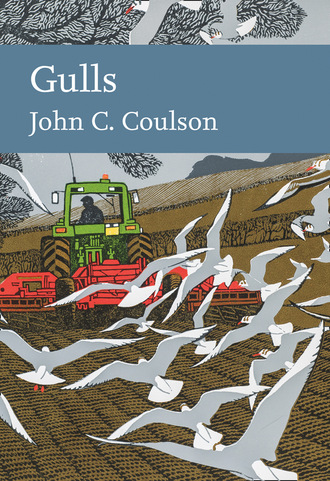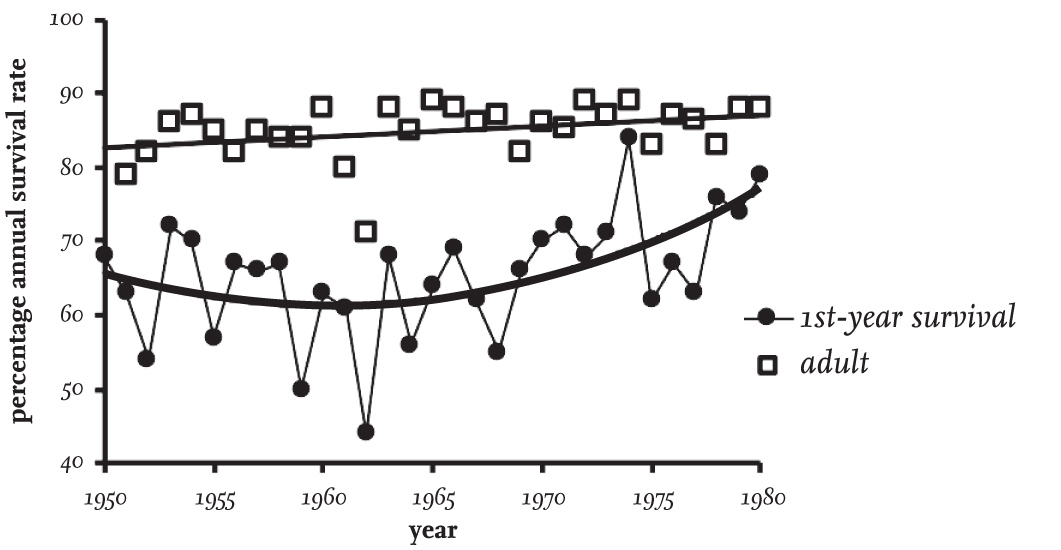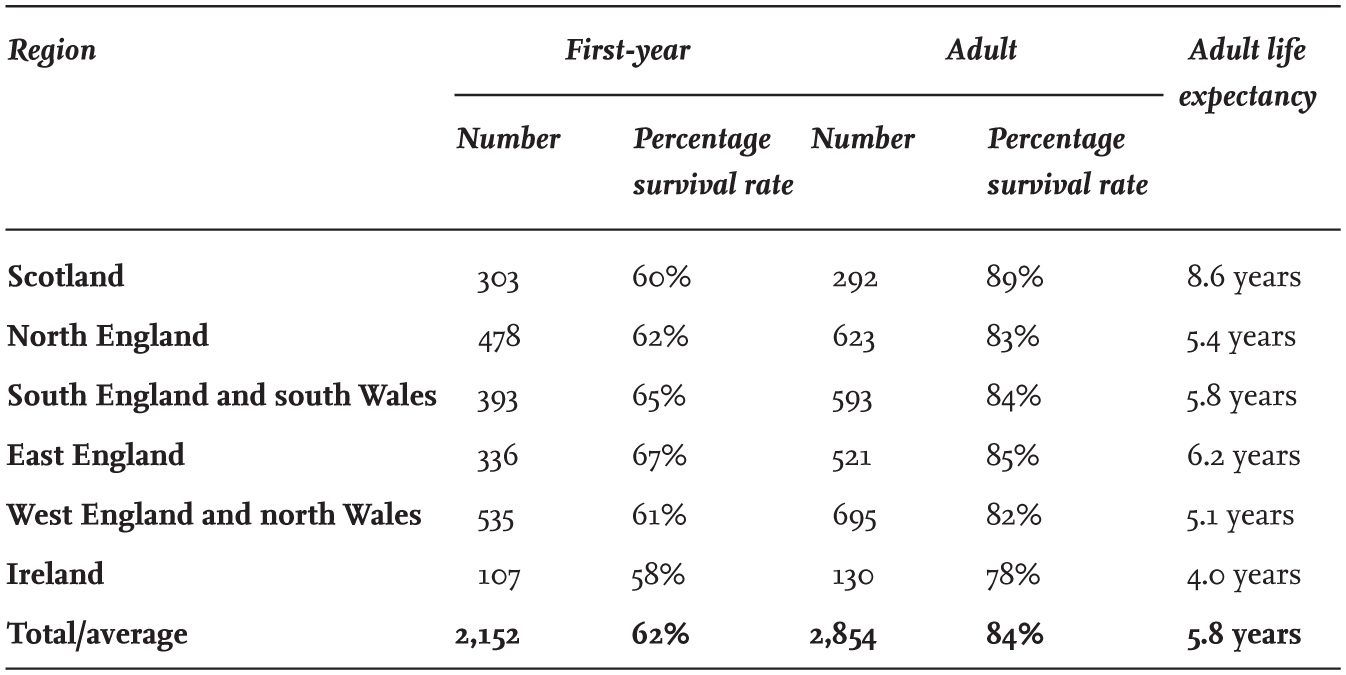
Полная версия
Gulls
Fortunately, methods have been developed that allow survival rates to be calculated based on age-truncated recoveries. MacKinnon and I used these in our studies (with help from Nicholas Aebischer and David Jackson) to determine annual survival rates for each year from 1950 to 1980 using recoveries of birds up to 10 years old (Fig. 40). This method excluded information on survival rates for the oldest 20 per cent of Black-headed Gulls living in the wild, but avoided bias produced by ring wear and whether senility was having any effect. Using this method on the accumulated BTO recoveries, annual survival of adults fluctuated around 83 per cent between 1950 and 1955, and then progressively increased to about 87 per cent from 1974 to 1980. The survival of first-year birds in the 1950s was about 60 per cent and increased progressively to about 70 per cent during the 1970s.

FIG 40. Estimates of the annual survival rates of adult and first-year Black-headed Gulls in Britain from 1950 to 1980. The adult survival estimates were based on birds recovered within 10 years of ringing to avoid bias. Each year runs from July to June, and the years shown relate to the start of each 12-month period. Both trend lines differ significantly from a constant survival rate over the period considered, and survival has gradually increased from 1950 to 1979. Note the low survival rate from July 1962 to June 1963, when adult survival declined to 71 per cent and that of the young fledged in 1962 decreased to 44 per cent. The winter during these 12 months was the most severe of the 30-year period.
The results show a number of interesting features. First, the annual survival rate has increased overall in both adults and first-year birds in more recent years. Second, the first-year survival rates show much more between-year variation. Third, in only one winter (1962/63, the severest during the range of years used in the study), do the birds show clear weather-related decreases in survival, with first-year birds managing only 44 per cent survival and adults 71 per cent survival in that year. And finally, the high (84 per cent) survival rate of first-years and above-average survival rate of adults in the 1974/75 winter coincided with the mildest weather at this time of year in England since 1869.
Regional survival rates
The survival rates of Black-headed Gulls ringed as pre-fledged chicks or as adults in different regions of Britain (Table 19) show little regional variation, and the small differences are all within the tolerances of the methods used. In general, the mortality rate in the first year of life is about double that of the birds once they become adults. However, the estimates for Ireland indicate that Black-headed Gulls here had both the lowest first-year and adult survival rates, and the lowest adult life expectancy. These figures are consistent with the appreciable current decline in adult numbers nesting there. The highest adult survival rate and adult life expectancies were in Scotland, which is consistent with the increase in numbers reported nesting there between 1985 and 2000.
TABLE 19. Estimates of the annual survival rates of adult and first-year Black-headed Gulls, and life expectancy of adults, in Britain and Ireland according to the area in which they hatched. Data are restricted to those birds ringed between 1950 and 1980.

MOULTING
There is surprisingly little information on the progress of the primary wing moult of Black-headed Gulls. The start of moult commences at the innermost primary, with the old feather usually dropped by adults in June (the earliest recorded date is 26 May), at a time many have already hatched chicks. Since the inner primaries are relatively short, the start of moult at this stage will have little effect on flight and the ability of parents to search for food for the young. After incubation is complete, the primary moult progressively spreads along the wing, until the last (outer) primaries are dropped in September and replaced by fully grown feathers by mid-October. In all, the primary moult takes three to three-and-a-half months from the first feather being shed to the longest primaries becoming fully grown.
The moult of the primary feathers by immature one-year-olds starts about a month earlier than in adults and is completed by September – a three-month period, which is generally shorter than that taken by the adults. The period when the outer and longer ninth and 10th primaries feathers are missing (August for first-year birds and September for adults) probably interferes most with efficient flight, and so this may inhibit long-distance migration until the new outer primaries have grown.
Конец ознакомительного фрагмента.
Текст предоставлен ООО «ЛитРес».
Прочитайте эту книгу целиком, купив полную легальную версию на ЛитРес.
Безопасно оплатить книгу можно банковской картой Visa, MasterCard, Maestro, со счета мобильного телефона, с платежного терминала, в салоне МТС или Связной, через PayPal, WebMoney, Яндекс.Деньги, QIWI Кошелек, бонусными картами или другим удобным Вам способом.



